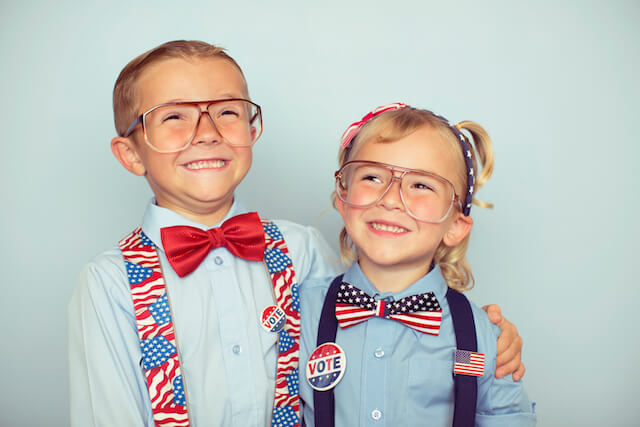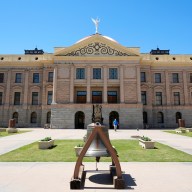Thus far, the 2016 election has been highly unconventional, to say the least. Talking about it with peers can be daunting — much less with impressionable youths.
Thankfully, the Newseum in Washington, D.C. is gearing up to launch a youth-centric program, “Election 2016: Stumped!? Making Sense of Campaign Chaos.” This collection of 11 civics-savvy case studies is designed to help parents and educators sift through campaign questions and confusion with their children or students. RELATED: Find your dream job with just the swipe of a finger “It feels so very different from previous election cycles, but also particularly for educators, who might be stumped on how to bring this controversial content into the classroom and be able to lead students through a productive debate about what it means for our democracy, and what it means for them,”says Anna Kassinger, curriculum manager at the Newseum. The program is online, user-friendly — and completely free. It launches the week of Aug. 15, and you can check outa sample. For now, here are a few highlights geared toward middle and high school students. RELATED: The new rules of leadership
Address “third rail” feelings and election essentials Don’t shy away from social studies Tap into kids’ curiosity Tackle controversy head-on That being said, it’s not easy to tackle thorny ethical and political issues with teens. For that, the Newseum offers the Freedom in the Balance andFrom Provocative to Productivetools, which help jump-start difficult conversations. These resources provide historical context and guiding questions to address issues ike, “Should hate speech be protected?” and “Is it legal to insult religion?” By anchoring conversations in primary sources and historical examples, parents and teachers can avoid pushing their own political views and help students draw their own conclusions. Now that’s news you can use.
Each of the 11 case studies centers on a critical debate question such as “Is the system fair?” or “Why are there so many candidates?” They all include election essentials — eyewitness accounts of historical events and first-hand explanations — that provide the context kids need to figure out how our system got to where it is today, explains Kassinger, who calls the fears and concerns specific to this election cycle “third rail” feelings, which may seem too hot to touch.Yes, these topics may strike a political nerve — but what hasn’t thus far?
Social media’s profound influence on presidential campaigns — for better or for worse — is chronicled in a case study entitled “Social Media Swirl.” Kids work their way through eight questions that explore the social nature of campaigns throughout history, from the aptly named social clubs that supported Andrew Jackson to the digital turning point that was Howard Dean’s campaign to our present-day social media saturation.
This entire election is fodder for debate, but certain topics really resonate with younger people, says Kassinger. “Why, at this point, are we inundated with ugly attack ads? Do they have an effect? Do they serve the electorate? The civics part of this — why is it that we have so many protests, usually lead by youth, and why are passions running so high?”Tapping into what matters to adolescents and teens can pique their curiousity, and help them better understand their role in a democracy.
Sometimes, just having open discussions can lead kids to be critical consumers, saysBarbara McCormack, theNewseum’s vice president of education. Helping them seek out all perspectives is the most important thing you can do, she advises.
Helping kids comprehend election chaos

iStock


















